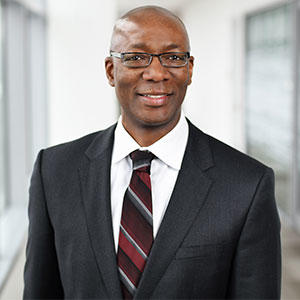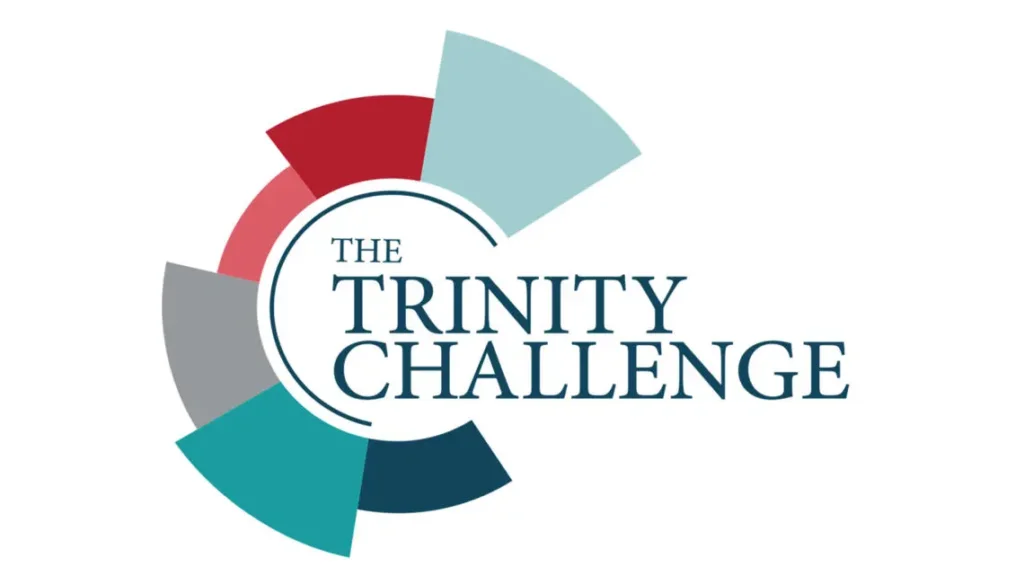Authors
WBCSD Communications
An interview with Ellis Jones
Ellis Jones is the Vice President Environmental, Health, Safety and Sustainability and Business Continuity at The Goodyear Tire & Rubber Company. Ellis recently took part in the first WBCSD Online Meeting in North America, which took place on 8 July for a conversation focused on how bringing sustainability to the core of business purpose and strategy builds long-term strategic advantage for companies.
This interview builds off of that conversation, leveraging Ellis’ extensive knowledge of the subject of organizational transformation, as well as his 30 years of experience, to dive deeper into the drivers and other key considerations for integrating sustainability into core business strategies. Through the lens of sustainability, we delve into how companies can produce outcomes that deliver long-term value for their business, people and the planet.
Question: Ellis, thank you again for sharing Goodyear’s sustainability journey and for your insights into the ways in which integrating sustainability into a company’s business strategy creates value for both a company and society. Could you provide us with an overview of the key points you made in your presentation?
Ellis Jones: During my presentation, I focused on how Goodyear is shifting from a “bolt-on” approach to sustainability to a value-based approach. For us, it meant embracing the concept of sustainability maturity. There are many known models, but we were particularly inspired by two, the Hagen-Wilhelm Change Matrix and the ESG Navigator by Hedstrom Associates. Leveraging these, we have referenced five levels to help the organization understand the journey to sustainability maturity:
- The “lone ranger”: We had what I call a “sustainability hero,” where sustainability is championed by the vision of an individual and it’s the will and determination of that individual that drives sustainability within the company.
- Organizational awareness: This level is marked by other business units beginning to take notice of the importance their respective stakeholders place on sustainability–whether it’s through a survey by a non-governmental organization (NGO), an investor inquiry or by employees. This organizational awareness begins to be translated into an acknowledgment of the need to move resources toward sustainability and to build more robust strategies around it.
- Business unit integration: At this level, ownership of the sustainability agenda is developing throughout the business, which translates into senior leadership integrating sustainability into their respective business units’ goals, plans and key performance indicators. It also shifts the role of the sustainability function from a position of persuasion and education to one of influence and strategic direction.
- Companywide oversight: This is when a sustainability governance process is implemented. It’s when the company CEO becomes engaged and senior management owns and establishes goals across the organization to identify more opportunities for value creation for the business and stakeholders.
- Brand integration: Sustainability is fully integrated into the brand – thus creating value through sustainability as a top priority. Sustainability now becomes a key driver of value creation and innovation—to both help grow the company’s market share and to address the social and environmental issues that intersect with the company and communities where they operate.
Over the past three years, Goodyear has embarked on a journey that I think puts us simultaneously in the second, third and fourth levels. This is not a linear process – our sustainability structure plays a key role in educating the organization on sustainability issues, our functions are increasingly taking control of bold sustainability goals and strategies, we are governing through our functions and functional leadership with our sustainability governance process and we are now starting to see business leaders driving the agenda and pushing to create value from and for sustainability.
In essence, what I wanted to share was the importance of embracing such a model as a means to advance sustainability, not as an add-on, but as a key driver of value
Question: In that context, what have been the critical elements that have allowed Goodyear to mature your sustainability process?
Ellis Jones: Some elements are specific to each level of maturity. For example, in the early stages, it is critical to have that individual who advocates for sustainability and pushes the agenda within the organization. That someone has to have the power and influence to drive and position the conversation. In effect, this person’s success is defined by validating proof of concept to senior management. But while this is key at the beginning, sustainability won’t progress or even survive if the effort lacks mass acceptance. To advance in the maturity curve, the main challenge early own – and this is valid for levels one and two – is to overcome cultural, organizational and political barriers.
That said, there are other elements that are valid for any level in the model and for any organization, not only Goodyear.
First, through my experience, I have learned that influencing key stakeholders within the organization is critical to success. To that purpose, the sustainability team has to be well-informed, educated and ready to engage stakeholders across the organization and externally. You must take the role of educator to build sustainability knowledge across the organization. It is preparation for facing and influencing political and organizational barriers. To be successful, you need to “walk in their shoes” and explain the benefits of sustainability in their language and in the ways they measure their success.
Second, stakeholders are critical in pushing for organizational change. To a certain degree, stakeholders motivate a review of sustainability issues within the organization. As the model evolves, these demands become relevant to the organizational functions. In your role as sustainability champion, being prepared to respond to such demands is key to helping the different business units embrace their specific journeys and in providing the tools that will allow them to integrate sustainability into their goals, plans and actions in a meaningful way.
One last yet powerful word of advice I would like to share is that, regardless of the phase of maturity you are undergoing, assessing where your company is is critical in every single step and process. It is the only way you will be able to adapt and put in place the actions needed to continue to mature.
Question: A clear outcome of this journey is Goodyear’s sustainability framework around sustainable materials, responsible operations, advanced mobility and an inspiring culture. Can you give us some examples of how these pillars are allowing the company to build growth for the organization while driving value for society and preserving the environment?
Ellis Jones: Our Better Future framework and its four pillars summarize what we believe and where we focus. These are the areas that are most important to us, as well as important to our stakeholders.
Our Sustainable Sourcing pillar summarizes our approach to responsibly managing the materials we use for our operations and productions. One example is our use of soybean oil that reduces use of petroleum-based products. We’ve already increased our usage by 90% compared to a goal of a 25% increase.
Responsible Operations is all about our day-to-day efforts to deliver high-quality products in an efficient manner, all with a culture of safety and health. One example is our drive to reduce energy use through zero-loss thinking and equipment efficiency.
The Advanced Mobility pillar focuses on how advanced forms of mobility – such as fleets, autonomous, connected and electric vehicles – are transforming the tire industry and have the potential to make driving safer and more sustainable. One example here is the importance of tire longevity, especially for our fleet customers who save significant time and labor by replacing fewer tires, as well as electric vehicle customers, who benefit from longer-lasting tires to handle increased torque from electric engines. In our commercial truck tire portfolio, Goodyear’s Endurance LHS steer tire is delivering extraordinary mileage, exceeding 200,000 miles for some fleets.
The Inspiring Culture pillar starts with ethical values and attracting top diverse talent, followed by fostering inclusion, offering opportunities for skill and career development, promoting health and wellness and making a positive impact in our communities. One example for this pillar is our increases in our Employee Resources Groups (ERG), which have grown by 84% globally over the past two years.
Question: During your presentation, you mentioned the most exciting part of Goodyear’s journey has happened over the past three years. Can you explain?
Ellis Jones: Indeed. For three years, we saw increasing commitment within the organization to advance the sustainability agenda. We made real progress motivated by a renewed ownership of the maturity model within Goodyear, as well as rapid and somewhat unexpected transformations in the business environment. Particularly, an increase in expectations from our stakeholders which included an evolution in the conversation with our investors and greater attention from our customers and communities in which we operate.
Question: As you continue your journey, how have recent events impacted your strategy? How do you see it impacting your path forward?
Ellis Jones: Being the leader of health, safety, sustainability and business continuity during a global pandemic is a unique situation, and it was challenging from an organizational point of view.
For Goodyear, it meant testing the plans and procedures we had in place. Our organization already had a very robust and people-centered business continuity process that turned to be critical in our response to the pandemic. For us, it was always about putting the safety and health of our associates first. COVID-19 gave us the opportunity to test our response plan and it allowed our organization to assess and respond adequately.
In terms of racial equity, the societal disruption we are facing is testing our work around diversity, inclusion and an inspiring culture. In our path toward integrating sustainability into our business strategy, our Better Future framework focuses on safeguarding our people and aspiring for a culture of ethical behavior and of celebrating diversity and inclusion. The current events are allowing us to step back to assess how to listen, learn and make the changes needed based on a way that meets our employee expectations. It also helps renew and redirect our focus to the health and wellness of our workforce and the communities in which we operate. Understanding where you operate and how your employees and customer base are impacted will determine how best to manage your response, focus your core competencies and allocate your efforts to make the largest impacts. And this is what is helping us face the racial equity challenges we are facing in the US.
To find out more about Goodyear’s journey, check out https://corporate.goodyear.com/
Ellis A. Jones, Vice President Environmental, Health, Safety, Sustainability and Business Continuity, The Goodyear Company

Ellis A. Jones has been with Goodyear for 31 years. Throughout his career, Ellis has led organizational transformations in Regional Manufacturing, Supply Chain Finance, Global Marketing Finance, Plant Accounting and Commercial Tire Finance. More recently, Ellis has been leading the Global Environmental, Health, Safety and Sustainability (EHS&S) organization since January 2017. In January 2020, with the addition of Business Continuity and recognition of the importance of EHS&S, Ellis was appointed to the position of Vice President
Related
Content

GSK, Google, Microsoft & McKinsey create partnership for better protection against health emergencies
15 September, 2020

Shell: Aiming to become a net-zero energy business by 2050
4 September, 2020

BCG to Achieve Net-Zero Climate Impact by 2030
2 September, 2020
